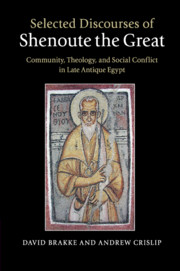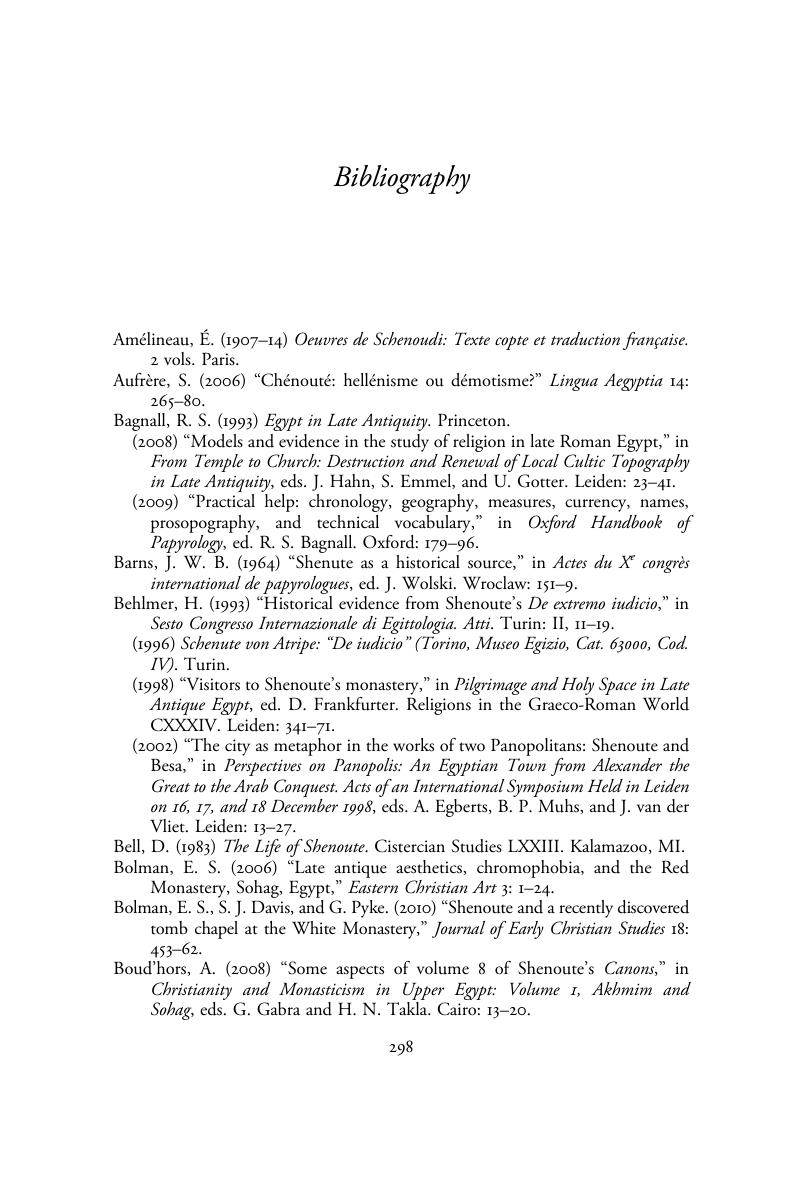 Selected Discourses of Shenoute the Great
Selected Discourses of Shenoute the Great Book contents
- Frontmatter
- Dedication
- Contents
- List of maps
- List of figures
- Acknowledgments
- Maps
- Introduction: Shenoute's life, times, and Discourses
- Part I Heretics and Other Enemies of the Church
- Part II Shenoute as Pastor and Preacher
- Part III The Christian's Struggle with Satan
- Part IV The Conflict with Gesios
- Bibliography
- Index of names
- Index of subjects
- Index of biblical passages
- References
Bibliography
Published online by Cambridge University Press: 05 December 2015
- Frontmatter
- Dedication
- Contents
- List of maps
- List of figures
- Acknowledgments
- Maps
- Introduction: Shenoute's life, times, and Discourses
- Part I Heretics and Other Enemies of the Church
- Part II Shenoute as Pastor and Preacher
- Part III The Christian's Struggle with Satan
- Part IV The Conflict with Gesios
- Bibliography
- Index of names
- Index of subjects
- Index of biblical passages
- References
Summary

- Type
- Chapter
- Information
- Selected Discourses of Shenoute the GreatCommunity, Theology, and Social Conflict in Late Antique Egypt, pp. 298 - 304Publisher: Cambridge University PressPrint publication year: 2015


